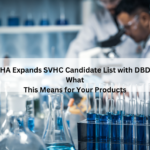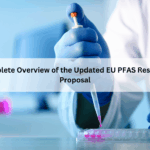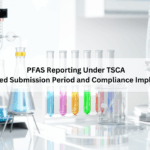All you need to know about new substance additions to Drinking Water Treatability Database (TDB) by US EPA
In order to control the impact of contaminants the U.S. Environmental Protection Agency (EPA) has designed the Drinking Water Treatability Database (TDB). This will help the United States address challenges against contamination of drinking water. This is a simple tool which provides information or references about the contaminants and the treatment processes to remove it from drinking water.
Previously there were more than 30 treatment processes, over 120 regulated and unregulated contaminants including 26 pre- and polyfluoroalkyl substances (PFAS).
11 PFAS with treatment information was recently added to the database by EPA, which brings the total number of PFAS with treatment processes, PFOA and PFOS to 37.
The PFAS added to the TDB are:
- Perfluoropentanesulfonic acid (PFPeS)
- Perfluorohexanesulfonamide (PFHxSA)
- Perfluorobutylsulfonamide (PFBSA)
- Perfluoro-4-methoxybutanoic acid (PFMOBA)
- Perfluoro-3-methoxypropanoic acid (PFMOPrA)
- Perfluoro-3,5,7,9-butaoxadecanoic acid (PFO4DA)
- Fluorotelomer sulfonate 4:2 (FtS 4:2)
- Ammonium 4,8-dioxa-3H-perfluorononanoate (ADONA)
- Perfluoro-4-(perfluoroethyl)cyclohexylsulfonate (PFECHS)
- F-53B: a combination of 9-chlorohexadecafluoro-3-oxanone-1-sulfonic acid and 11-Chloroeicosafluoro-3-oxaundecane-1-sulfonic acid
- Perfluoro-2-{[perfluoro-3-(perfluoroethoxy)-2-propanyl]oxy}ethanesulfonic acid, also known as Nafion BP2
What type of contaminant references are included in the TDB?
The TDB includes microbial, radiological and chemical contaminants that are regulated in drinking water, present in Contaminant Candidate list (CCL), water security interest, pesticide registration interest, endocrine disruptors and pharmaceuticals.
Disinfection byproducts (DBPs) are not included in the database as the control strategies for DBPs are different from the contaminants present in drinking water.
The parameters that are looked upon for the contaminants are solubility, Henry’s law constant and vapor pressure.
There are microbial parameters too such as size, shape and fate and transport parameters to assess the presence of contaminant in source waters.
Treatment Processes
TDB has extensive number of treatment processes which includes both most commonly employed and less commonly employed but still known to be effective. The effective treatment processes include the key process, water quality parameters and the contaminant’s importance.
EPA Council works efficiently to develop strategies towards the health protection of the public. The Council Continues to engage with the public to make them understand the risk of the chemicals and reduce the potential risk caused by the chemicals.
Do you want to know how this affect your business in the United States? Talk to one of our Compliance Specialists today!





